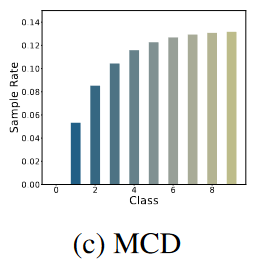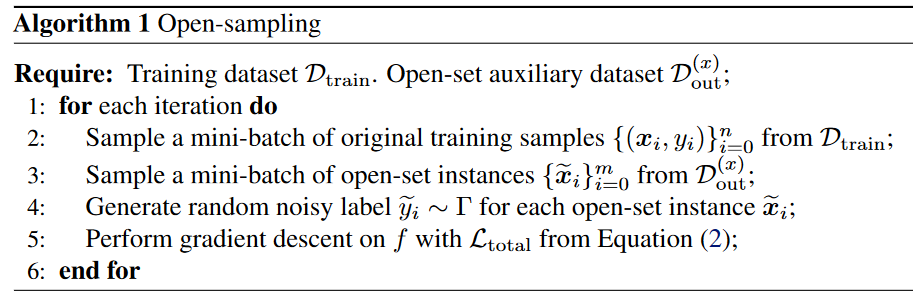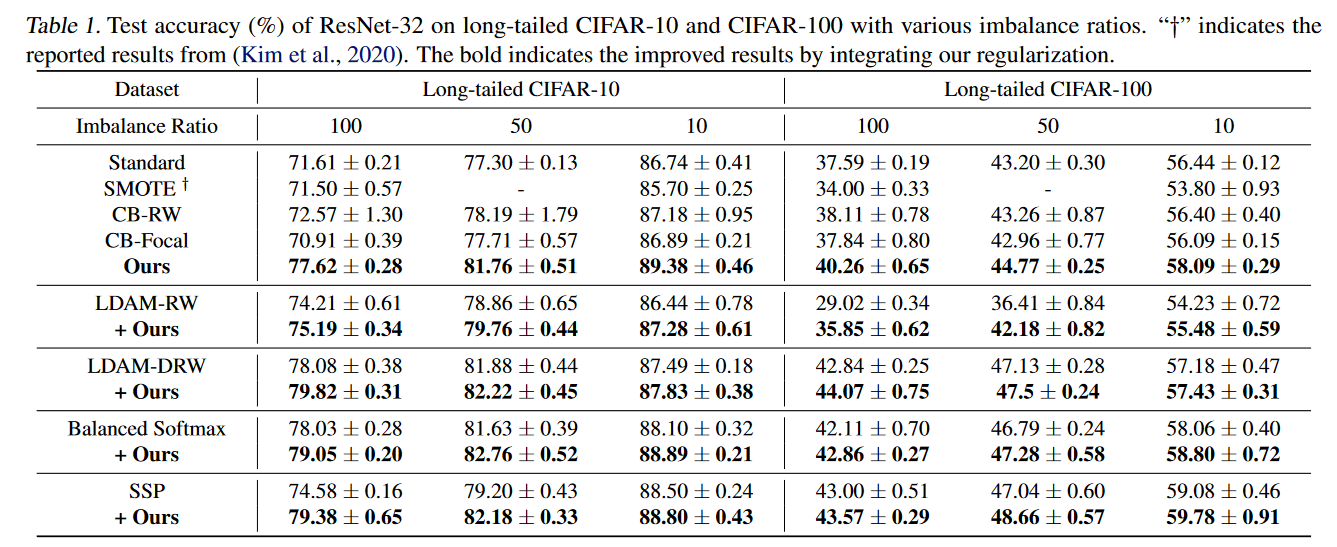[ICML2022]Open-Sampling Exploring Out-of-Distribution Data for Re-balancing Long-tailed Datasets
在长尾数据中,作者主动加入开集噪声,并按一定比例赋予噪声样本闭集标签,来帮助长尾学习。
引入开集样本训练模型有点像dropout,“破坏”某些模型参数防止尾部类的过拟合
Motivation
长尾学习中的训练数据集分布不平衡的问题,解决方法之一是重采样。重采样主要对于尾部类重复采用,但这种做法往往会导致尾部类的过拟合。
为了缓解过拟合[2](Rethinking the value of labels for improving class-imbalanced learning)引入了无标签的闭集类样本(闭集类指数据的label属于训练集label),再用半监督的方式对于无标签附加伪标签。但还是需要较多成本收集闭集样本。
这篇论文作者受此启发,希望引入开集样本平衡长尾数据集。作者先基于一个理论:均匀得为开集样本赋予闭集噪声标签,即开集样本有1/K概率成为j类(K为闭集类种类,j为任意一个闭集类),不会影响分类器。从贝叶斯定理的角度证明如下:
根据贝叶斯定理:\(\mathrm y^*=\arg\max_{y\in\mathcal{Y}}P(y|x)=\arg\max_{y\in\mathcal{Y}}P(x|y)P(y),\)
假设:\(\arg\max_{y\in\mathcal{Y}}P_{\mathrm{mix}}(\boldsymbol{x}|y)P_{\mathrm{mix}}(y)=\arg\max_{y\in\mathcal{Y}}P_{\mathrm{s}}(\boldsymbol{x}|y)P_{\mathrm{s}}(y).\)
\(P_\mathbf{s}\)表示训练集,样本数为N;\(P_\mathbf{out}\)表示开集数据集,样本数为M,它的标签为均匀分配的噪声标签;\(P_\mathbf{mix}\)为两者混合的数据集。
简单来说,由于\(P_\mathbf{out}\)标签均匀赋予,因此先验\(P_\mathbf{out}(y)\)为常数1/K。
最后的预测结果取最大值,常数部分可忽略,因此混合数据集和原来的闭集数据集上的贝叶斯预测结果相同。
Method
开集样本标签的分配
均匀加入开集噪声后的\(P_\mathbf{mix}\)依然是不平衡的,但如果简单的把开集样本label赋予尾部类“9”会导致性能下降。

为了保持开集噪声样本不会降低性能,且平衡长尾数据集,作者提出补偿分布(Complementary Distribution),用于衡量开集样本上各个标签的分布,表示为\(\Gamma\)。引入尽可能少的开集样本的补偿分布称为Minimum Complementary Distribution (MCD),表示为\(\Gamma^m\),其实两者可以当成一回事。
补偿采样率(Complementary Sampling Rate):每个开集样本被赋予标签j的概率:\(\Gamma_j=\frac{\alpha-\beta_j}{K\cdot\alpha-1},\ \beta_j=\frac{n_j}{\sum^K_{i=1}n_i}\),不难看出补偿采样率:
- \(\sum_{i=1}^K\Gamma_i=1\)
- \(\lim_{\alpha\to\infty}\Gamma_j=\frac{1}{K}\)
以及定义\(\Gamma=\Gamma^{m}, \alpha=\max(\beta_j)\),此时开集样本不会被赋予j=0类标签。

整体训练伪代码如下,值得注意的是,每一个epoch都会重新赋予开集样本噪声标签。

引入对应的损失函数正则化项
为了防止开集噪声占用太多模型参数,导致无法收敛,特别是M>>N时,提出了正则化项专门处理开集噪声样本:
\(\omega_{\widetilde{y}}\)为对应类的损失权重\(\omega_{\widetilde{y}}=\Gamma_{\widetilde{y}}\cdot K.\),标签$\widetilde{y}\sim\Gamma $。原来的闭集样本使用自身标签训练,整体的损失函数为:
上式可简写,其中\(\mathcal{L}_{\mathrm{imb}}\)可替换为其他基于损失函数的方法:
Experiments
open-sampling(作者的方法)和不同的sample策略,以及附加在baseline上的提高的比较:

作者还测试了测试集上的OOD检测性能;超参\(\alpha,\ \eta\)的设置;测试了开集样本数据集的选择对性能表现有影响;开集样本的多样性对性能没有太大影响;用t-sne可视化表征分布,表明引入开集样本能促进表征学习
参考文献
- Wei, Hongxin, et al. "Open-sampling: Exploring out-of-distribution data for re-balancing long-tailed datasets." International Conference on Machine Learning. PMLR, 2022.
- Yang, Yuzhe, and Zhi Xu. "Rethinking the value of labels for improving class-imbalanced learning." Advances in neural information processing systems 33 (2020): 19290-19301.



